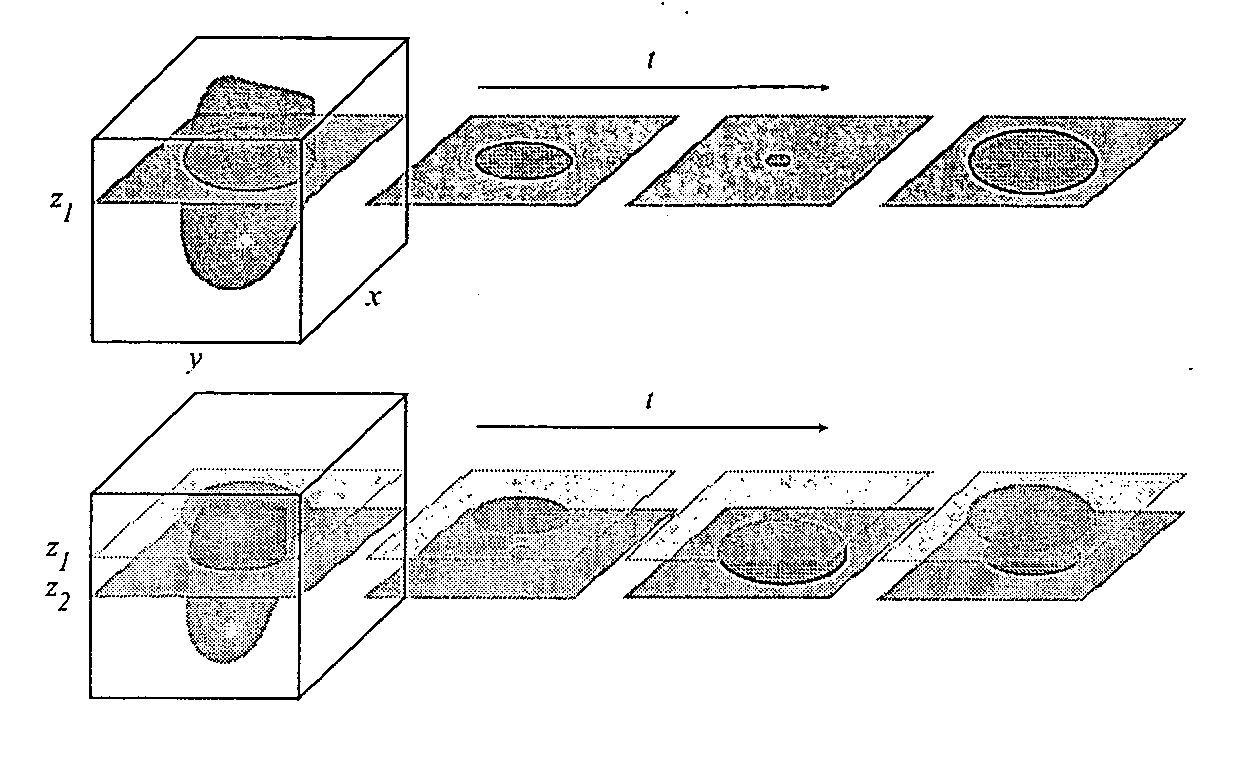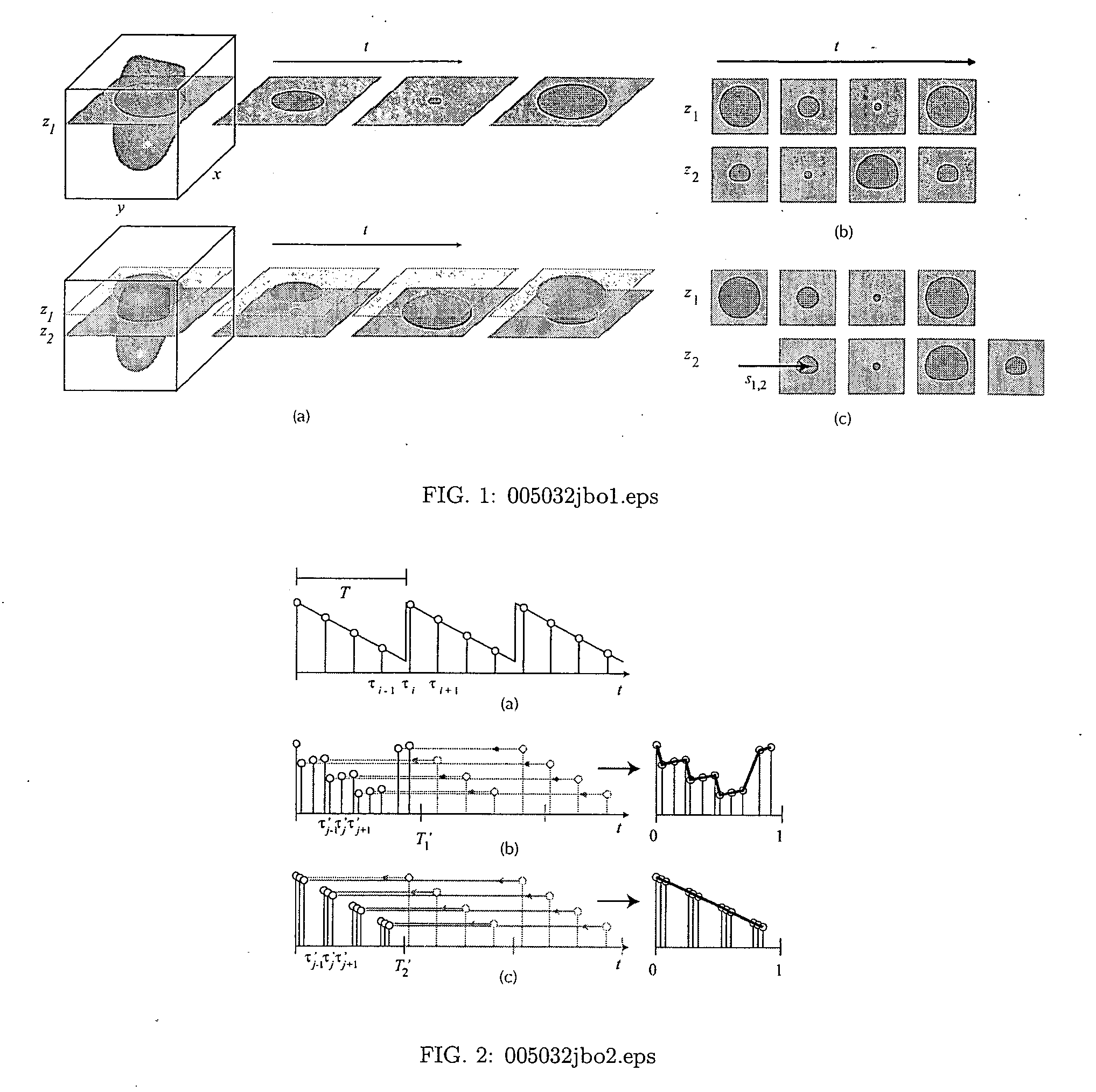Four-dimensional imaging of periodically moving objects via post-acquisition synchronization of nongated slice-sequences
a four-dimensional, non-gated technology, applied in the field of cardiovascular medical imaging, can solve the problems of difficult reliable triggering signals to gate the acquisition, cumbersome acquisition, and slow confocal microscopes at successive depths, and achieve the effect of rapid execution
- Summary
- Abstract
- Description
- Claims
- Application Information
AI Technical Summary
Benefits of technology
Problems solved by technology
Method used
Image
Examples
Embodiment Construction
[0027] Fluctuations in fluorescence intensities produced by regular cycles can be used to register and segment images. Any regular sequence can be used to register four-dimensional data or can be used to identify individual fluorescence particles or cells within a preparation, if images are collected with a high enough frame rate. The availability of fast scanning confocal microscopes, for instance, make it possible to collect optical sectioned data in fast temporal sequences.
[0028] For instance, the regular beat of the heart can be used to align time-lapse images taken at different focal planes. This makes it possible to collect rapid time sequences of three dimensional data. Since images taken sequentially on the same plane can be acquired more rapidly that images collected on different optical planes, time sequences can be acquired at separate optical planes and then can be registered with respect to the temporal alignment using the regular rhythm of the cardiac cycle.
[0029] Re...
PUM
 Login to View More
Login to View More Abstract
Description
Claims
Application Information
 Login to View More
Login to View More - R&D
- Intellectual Property
- Life Sciences
- Materials
- Tech Scout
- Unparalleled Data Quality
- Higher Quality Content
- 60% Fewer Hallucinations
Browse by: Latest US Patents, China's latest patents, Technical Efficacy Thesaurus, Application Domain, Technology Topic, Popular Technical Reports.
© 2025 PatSnap. All rights reserved.Legal|Privacy policy|Modern Slavery Act Transparency Statement|Sitemap|About US| Contact US: help@patsnap.com



